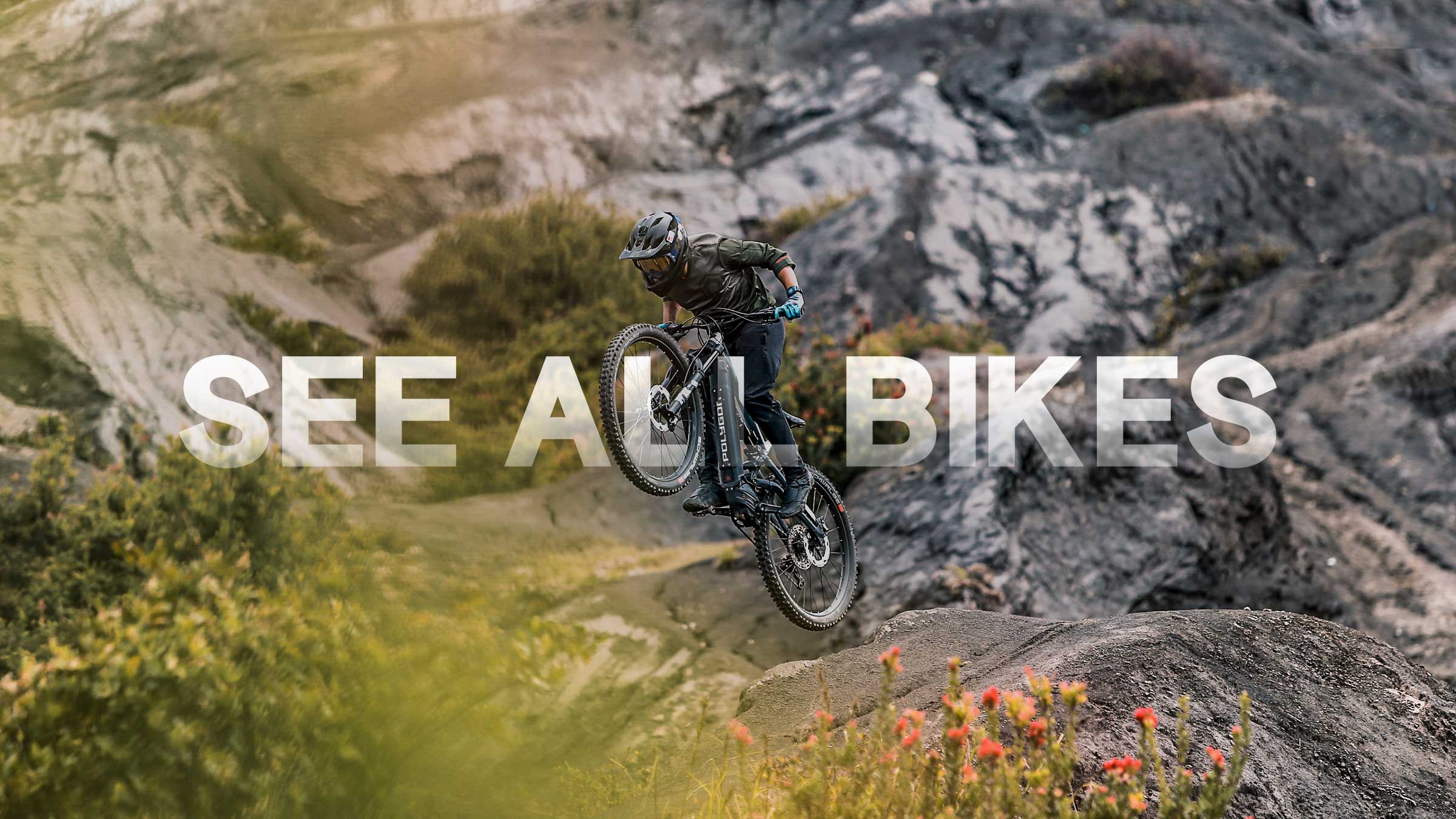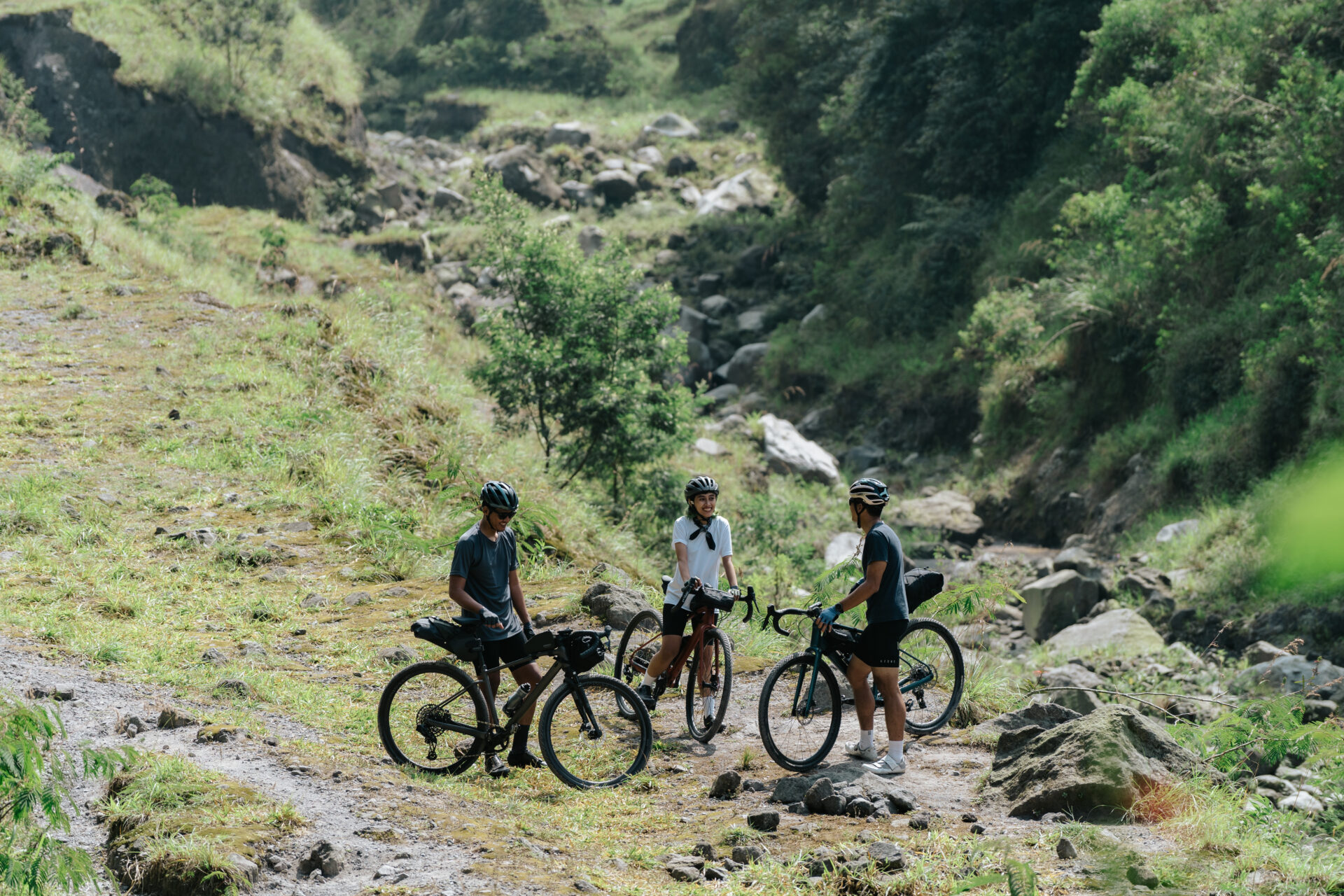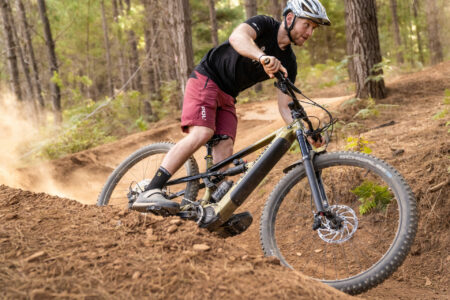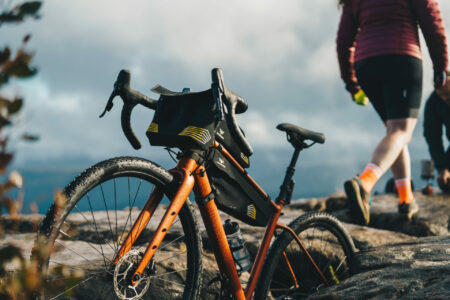Gravel biking is an exhilarating and transformative activity that offers a refreshing escape from the confines of city life. It opens up a world of uncharted territories and allows you to intimately connect with the breathtaking beauty of nature. The true magic of gravel biking lies in the sense of adventure and exhilaration it brings.
Unlike its road-bound counterpart, gravel biking demands a heightened level of physical and mental engagement, navigating rugged terrain and testing paths that awaken your senses. However, the sheer satisfaction and sense of achievement you gain from conquering these obstacles make it an unforgettable and empowering experience. This article will provide you with eight empowering tips to fully embrace the excitement and joy that gravel biking has to offer.
-
Bolt it Up
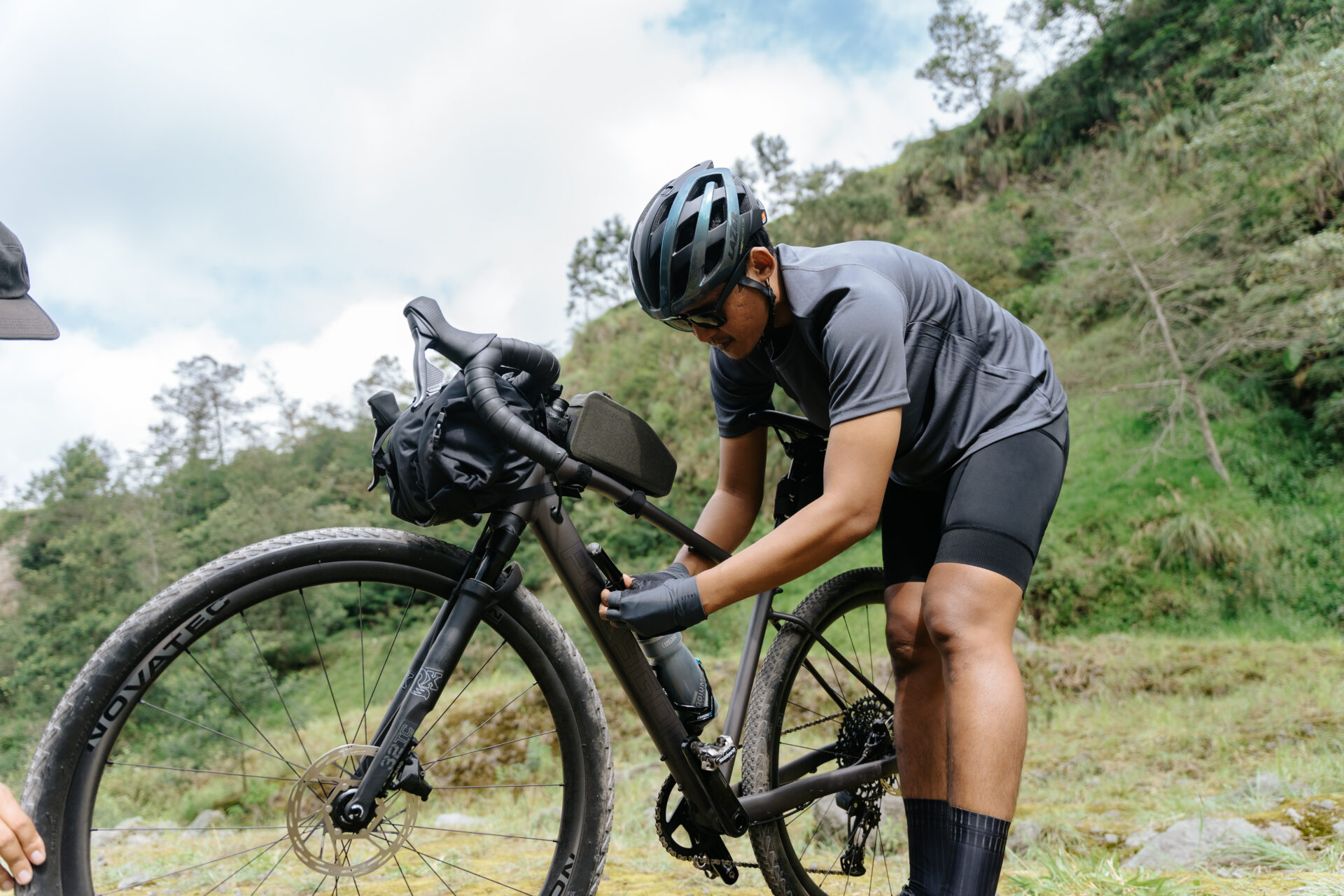
Ensuring a secure bike is essential for a seamless gravel biking experience, especially for a beginner. Take a moment to prioritize safety by inspecting and tightening the bolts for your water bottle cage, handlebars, stem, seatpost, and pedals before you hit the trails.
Loose bolts can not only cause discomfort but also jeopardize your safety as you encounter challenging terrain. The vibrations and bumps can gradually loosen the bolts, posing a risk of parts coming loose. By taking a few minutes to tighten any loose bolts and ensuring everything is secure, you can enjoy your gravel biking adventure with peace of mind and focus on the fun and excitement.
-
Research the Terrain
Getting ready for an unforgettable gravel biking adventure involves thorough preparation for the terrain. Despite our city-state's limited natural landscapes, there are always plenty of thrilling off-road trails awaiting exploration. it's essential to conduct research and familiarize yourself with the terrain before embarking on your gravel biking experience. This includes assessing the trail's difficulty, identifying potential hazards, and staying informed about the prevailing weather conditions.
By taking these steps, you'll be mentally and physically primed for the challenges that lie ahead. Additionally, proper preparation ensures you have the necessary gear and equipment, setting the stage for a successful and enjoyable ride. Seize the opportunity to plan your route strategically, maximizing your gravel biking experience and embracing the adventure that awaits.
-
Tackle Corners Cautiously

Gravel biking offers a thrilling experience, but it's important to recognize the differences between riding on gravel and asphalt or concrete. Cornering on gravel can present unique challenges due to the loose rocks and unpredictable terrain. These factors can affect your bike's traction and stability, making it more difficult to navigate sharp turns.
To navigate corners safely and avoid mishaps, adopt a cautious approach. Reduce your speed before entering corners, brake earlier than you would on a smooth road, and gradually lean into the turns. Take the time to practice cornering techniques on various types of gravel, allowing you to gain confidence and adapt to different terrains. Remember, maintaining a balance between fun and safety is key while enjoying your gravel biking adventures.
-
Ensure Optimal Tire Pressure
Gravel biking introduces unique challenges due to the unpredictable nature of loose terrain. In this context, tire pressure emerges as a critical factor that can significantly impact your ride's performance and safety. Unlike road tires, gravel tires necessitate lower inflation to absorb shocks and maintain optimal traction on uneven surfaces. Overinflating your tires can lead to a jarring and uncomfortable ride, compromising grip and increasing the vulnerability to punctures or blowouts.
Conversely, underinflating your tires can result in pinch flats and reduced efficiency, making pedalling more challenging. To ensure an optimal riding experience, take a moment before your ride to check your tire pressure and adjust it according to the manufacturer's recommendations. Keep in mind that gravel tire pressure may differ from that of road bike tires, so following the manufacturer's guidelines is essential.
-
Wear Gravel Footwear
When venturing onto gravel trails, ordinary shoes won't fully cut it. To conquer the challenges of rough and slippery terrains, you need footwear designed specifically for gravel biking which is gravel shoes. With their aggressive soles featuring deep lugs for superior traction, sturdy construction to withstand impacts, and increased waterproofing for wet conditions, these shoes offer the grip and protection you need.
Gravel shoes also prioritize comfort during long rides, incorporating extra cushioning in the insole and midsole to reduce fatigue and prevent discomfort. When choosing your gravel shoes, focus on finding the perfect fit for a secure and comfortable ride.
-
Put Fitting Bike Bags, or Not
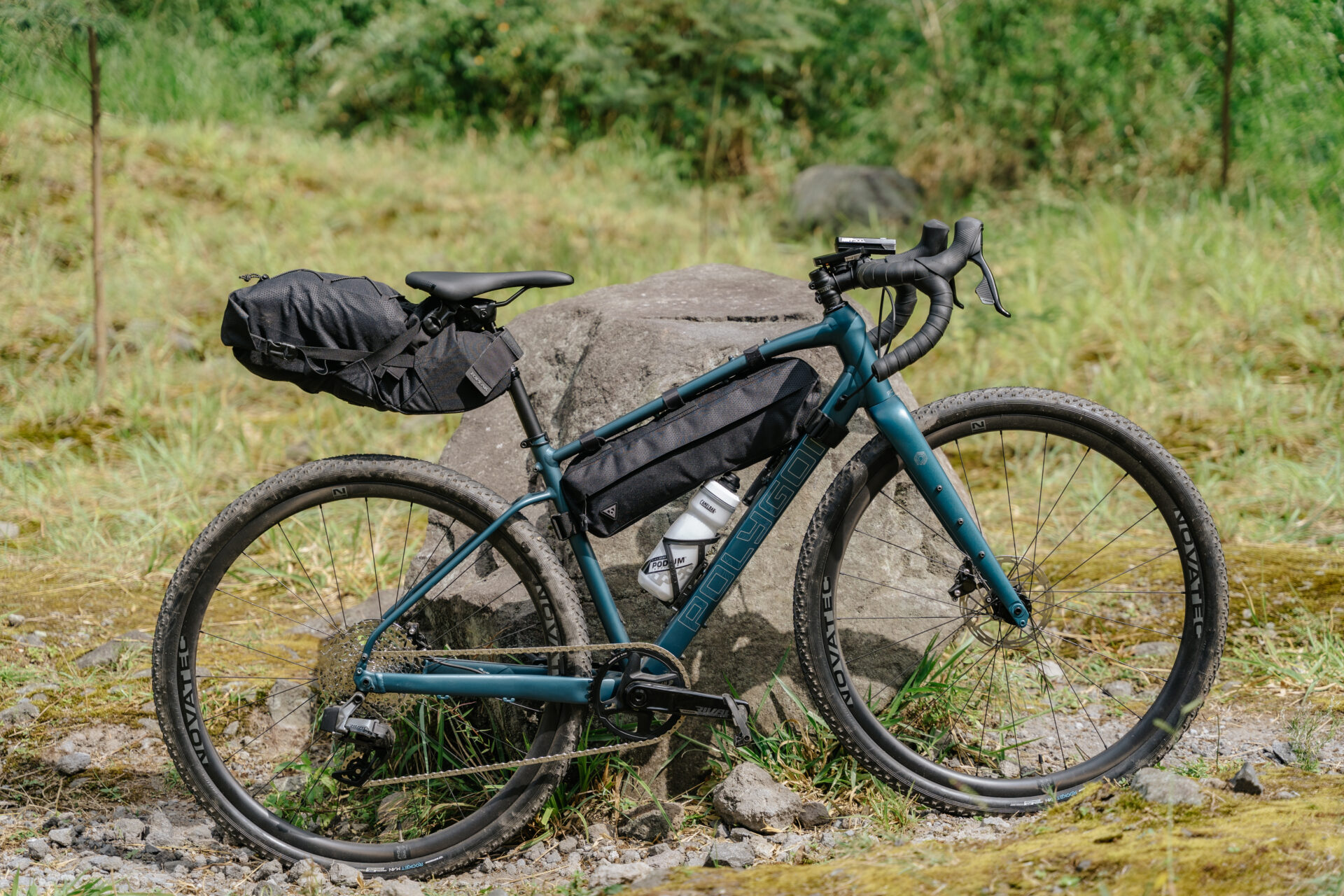
Embracing a lightweight approach can significantly enhance your riding experience. While the decision to bring bags along ultimately depends on your individual needs, it's worth reconsidering their necessity.
The nature of gravel biking demands agility and control, especially when traversing rugged terrain or navigating steep descents. Carrying bags can introduce additional weight that may compromise your balance and maneuverability. By embracing a minimalist mindset and carefully selecting the essentials, you can optimize your performance and revel in the freedom of a more unencumbered gravel biking adventure.
-
Join a Community
Gravel biking offers an opportunity to connect with a diverse and passionate community of riders. By actively engaging with the gravel biking community, you can tap into a wealth of knowledge, forge new friendships, and expand your riding horizons.
Connect with like-minded individuals through online forums, social media groups, or local clubs. Join group rides, participate in organized events, and share your experiences with others. The gravel biking community is known for its welcoming nature and willingness to support fellow riders on their journey.
-
Be Attentive
One crucial aspect of gravel biking is to ride responsibly and be mindful of your speed. It's important to resist the temptation of going too fast, especially when you're feeling confident and the trail seems manageable. Remember, gravel biking involves navigating unpredictable terrain, which can quickly turn hazardous if you're traveling at excessive speeds.
When descending, exercise caution and be prepared for sudden changes in the trail, such as loose rocks or uneven surfaces. Maintaining a controlled speed allows you to react appropriately and avoid potential hazards. Riding within your skill level and utilizing your brakes when necessary ensure a safer and more enjoyable gravel biking experience.
Additionally, when riding in a group, maintaining a safe distance from other riders and communicating effectively becomes even more crucial. By riding responsibly and being mindful of your speed, you can minimize the risk of accidents and enjoy the adventure of gravel biking to the fullest.
Conclusion

Gravel biking is an exhilarating way to break free from the city, tackling rough terrain and thrilling trails that demand your full engagement. To make the most of this experience, check your bike's condition, familiarize yourself with the terrain, master safe cornering, maintain proper tire pressure, wear suitable shoes, reconsider carrying bags, engage with the community, and ride at a comfortable speed. By following these recommendations, you'll have a blast conquering obstacles and exploring the wonders of nature.


